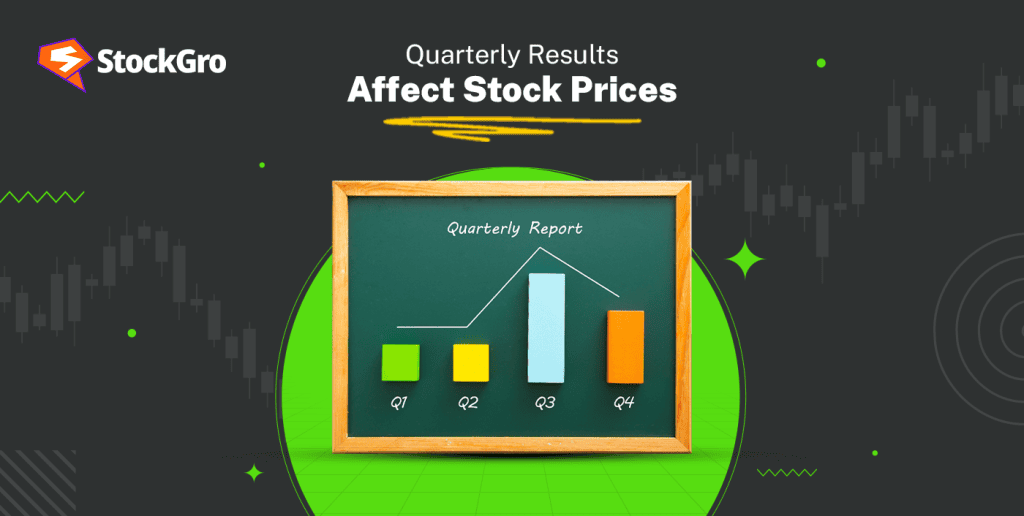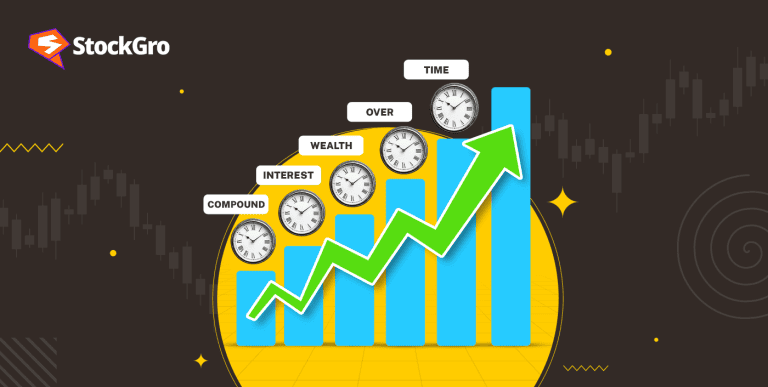
Did you notice that within hours, quarterly reports may affect stock values to soar or crash? Published every three months, these financial disclosures provide corporations with a report card, allowing investors to see their performance, challenges, and future potential. Regarding the stock market, these announcements are turning points that usually cause strong responses from both long-term investors and traders.
Apart from reflecting the financial situation of a business, quarterly results affect investor attitude and market trends. Understanding how to evaluate these reports can help you decide whether to buy, stay, or sell stocks with more insight.
The main elements of quarterly results will be discussed in this article together with how they affect stock prices and offer practical advice to enable you to confidently negotiate the unpredictable terrain of earnings season.
Catch more insights here: https://youtu.be/5BmotOiCFeQ?feature=shared
What are quarterly results?
Published every three months to offer an update on their performance, quarterly results, also known as earnings reports, are financial statements sent by publicly traded corporations. These studies are absolutely important since they provide a quick view of the operational effectiveness and financial situation of the business during the last quarter.
Through consolidated filing for Listing Obligations and Disclosure Requirements (LODR), the Securities and Exchange Board of India (SEBI) has simplified quarterly disclosure obligations for listed businesses. Effective from the quarter ending December 2024, firms have to turn in financial disclosures 45 days following the quarter’s end and governance-related disclosures within 30 days. This fresh strategy seeks to lower filing counts, minimise redundancy, and improve investor information availability.
By using quarterly results comparison with past quarters, investors can spot trends in the performance of a company over time. It shows whether the business is expanding steadily, contracting, or otherwise changing. Consistent income growth, for example, would point to a good business strategy and market demand; diminishing net income would suggest underlying problems.
Apart from historical analogues, it is imperative to evaluate the quarterly performance of a company against analyst expectations. Based on their knowledge of the business and industry trends as well as their research, analysts offer income projections. When a company’s performance surpasses these expectations, it is usually interpreted as a favourable indication that can cause the stock price to rise. On the other hand, a negative market reaction could follow from performance below expectations.
Key elements of quarterly results that influence stock prices
For businesses, quarterly results serve as performance reports; particular measures have a significant effect on stock prices. The main components are explored as follows:
Revenue and earnings growth
The most often monitored numbers are earnings and revenue. While missing sales estimates can cause significant drops, beating income projections usually sets off a stock price frenzy. If a tech company exceeds income projections because of more product sales, for example, investors could view this as indicating great growth potential and would thus enhance the stock price. On the other hand, a revenue miss could cause a bad market attitude.
Earnings per share (EPS)
For investors, EPS measures profitability per share and is therefore a vital statistic. An increase in EPS signals efficient operations, attracting buyers. However, declining EPS, even alongside revenue growth, might indicate rising costs or shrinking margins, eroding investor confidence. For example, a company posting robust revenue but a falling EPS might see its stock price dip.
You may also like: How EPS Impacts Stock Performance and Investor Decisions
Future guidance
Management’s outlook is often a bigger driver of stock prices than the results themselves. Positive guidance on future growth, cost control, or market opportunities can boost stock prices, even if quarterly numbers are mediocre. On the flip side, cautious or negative guidance may trigger a sell-off.
Debt levels and cash flow
Debt and cash reserves of a corporation help to reveal its financial situation. While robust cash flow points stability, high debt levels might lower stock prices. For example, companies that actively reduce debt often see improved investor sentiment and rising stock prices.
Sector-specific metrics
Industry-specific indicators also play a pivotal role. For example, non-performing assets (NPAs) in banking or user growth in technology are important indicators. Reflecting its future growth potential, a tech company seeing notable user increase may see its price rocket even if earnings are unchanged.
How quarterly results impact stock prices
Positive results: Beating expectations
Sometimes a company’s exceeding of market expectations sets off notable price swings. Strong income growth, more than projected earnings, or better margins point to good market positioning and management, which builds investor confidence.
For instance, Infosys reported income growth and EBIT margin of 21.1%, up by 100 basis points from the prior quarter, exceeding market expectations in Q2 2024. Infosys’s stock prices surged in response to this strong performance; they started at ₹1,935.20 and soon hit an intraday high of ₹1,958.35.
Negative results: Missing expectations
On the other hand, not meeting projections may cause stock prices to drop sharply. Investors typically penalise underperformance, particularly if it results from operational inefficiencies, decreased revenues, or growing expenses.
For example, Mamaearth’s parent company, Honasa Consumer LTD, posted earnings in Q2 FY25 below market forecasts because of lower performance in Mamaearth and a higher-than-expected effect of inventory correction. Honasa’s stock price dropped significantly as a result; it dropped 18% in one day, adding to a 20% drop from the previous session. Over two days, the stock showed a cumulative drop of 34.70%.
Neutral or mixed results
Quarterly results that meet expectations often result in subdued or volatile stock movements. Flat earnings or a lack of clear direction might keep investors cautious, especially if the company issues weak future guidance. For example, a company meeting EPS estimates but projecting slower growth in the next quarter may experience a sell-off despite neutral results.
Market sentiment and external factors
External economic events and more general market movements might magnify stock responses to quarterly performance. For example, while in negative markets strong results may not greatly increase stocks, in a bullish market even average results could lead to price appreciation. Further impacting price changes are geopolitical concerns or macroeconomic events like as interest rate increases, which could eclipse company-specific performance.
Also read: Understanding Stock Market Analysts: How to Leverage Their Advice
What investors should look for in quarterly results
When analysing quarterly results, investors should focus on specific elements to assess a company’s performance and its potential impact on stock prices.
- Historical trends: Comparing the most recent figures with past quarters helps investors spot trends in growth or decline. Consistent improvement in metrics like revenue and profit signals stability, while declines may indicate underlying challenges.
- Analyst expectations: Usually, quarterly performance is compared to analyst forecasts. While lacking these expectations could cause a sell-off, a company exceeding these expectations might increase investor confidence and result in stock price rise.
- Key ratios: Profit margins, return on equity (ROE), and price-to-earnings (PE) ratios provide information on value, efficiency, and profitability. A low PE ratio relative to industry rivals, for instance, may indicate undervaluation; falling profit margins could be a warning sign.
- Red flags: Rising operating expenses, declining income, or inconsistent profitability should cause questions. These patterns could point to lowered competitiveness or inefficiency, thus influencing the future development possibilities.
- Corporate commentary: The comments of management offer important new perspectives on the problems, possibilities, and future direction of the business. Positive comments, including expansion plans, usually comfort investors; but, cautious or imprecise comments could inspire doubt.
Also read: Unlocking financial insights: The power of ratio analysis
Bottomline
For investors, quarterly reports are an indispensable tool since they provide a whole view of the financial situation and performance of a firm. These studies not only show a company’s present situation but also offer insightful analysis of its market posture and expansion direction.
Those who spend time evaluating important indicators, contrasting patterns, and deciphering management’s comments will be more qualified to make wise decisions. Although it’s easy to respond just to headline figures, thinking holistically, that means evaluating industry patterns and future direction, can greatly improve investment results.
FAQs
Do stocks go up after quarterly earnings?
If the business surpasses market expectations with robust sales growth, higher earnings per share, and optimistic outlooks for the future, stocks may rise following quarterly results. Good outcomes inspire investor confidence, which raises stock prices. Stock prices may drop, nevertheless, should the business fall short of expectations or offer poor forecasts. Stock price swings after results announcements can depend on outside events and market mood.
Should I buy stock before or after an earnings report?
Given possible volatility and uncertainty, buying shares before an earnings release might be dangerous. Should the business surpass expectations, stock prices could climb; nevertheless, poor performance can cause rather significant reductions. Waiting till after the report lets you make a wise choice grounded on real performance and market response. Deciding the appropriate course of action for your portfolio will depend on your investing strategy and risk tolerance.
How to know which stock will rise tomorrow?
Given market volatility, determining which stock will gain tomorrow is difficult. Examine price trends, volume statistics, and indicators including moving averages using technical analysis. By examining a company’s financial situation, performance, and market posture, fundamental analysis supports Stay informed on news, market mood, and economic happenings. To reduce risks, diversify your investments, and for well-informed advice, speak with financial professionals. Keep in mind that no system can guarantee precise forecasts.
Why do stock prices go down after good earnings?
If future direction is weak or if outcomes fall short of market expectations, stock values can decline following strong performance. Investors who expected even stronger performance could have been let down. Furthermore, influencing stock prices even with good performance are outside variables such as larger market movements, economic developments, or investor profit-taking. Stock price swings after earnings reporting depend much on investor behaviour and market mood.
What is the 8 week hold rule?
The 8-week hold rule covers stocks that increase more than twenty percent three weeks after purchase. This criteria enables investors to find outstanding stocks with solid foundations and great institutional interest. Should a stock satisfy this criteria, investors should hang onto it for at least eight weeks to optimise possible returns. Popularised by William O’Neil, this approach seeks to grab notable increasing momentum in top-performing companies.

